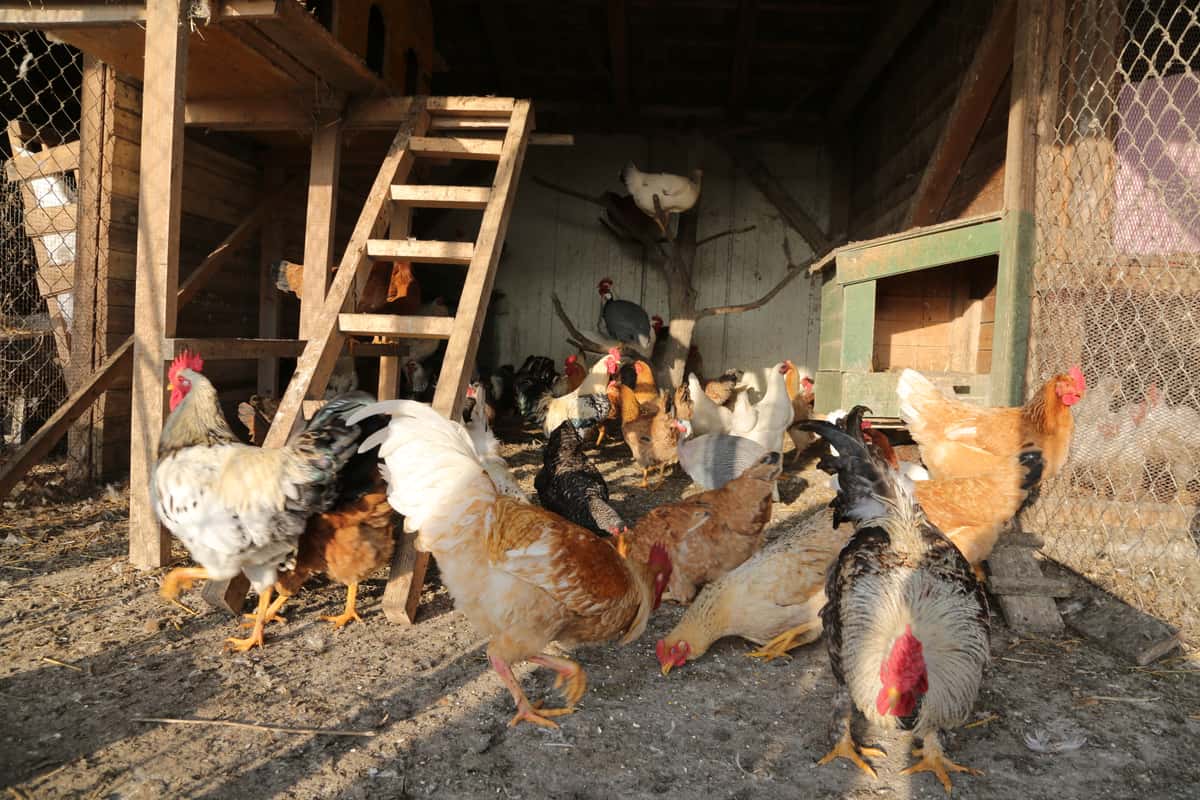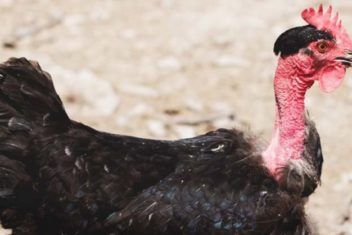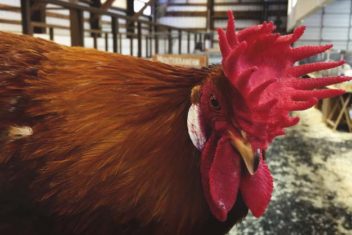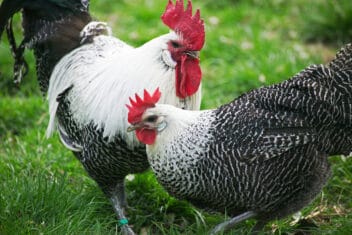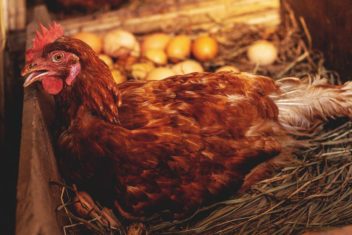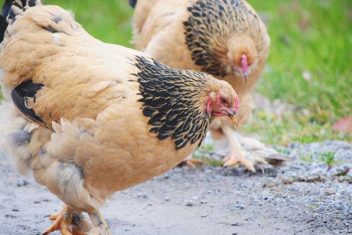We’ve all been there. You spend an afternoon cleaning out the chicken coop, and by the time you head inside for the night, you’re coughing, hacking, and congested.
It has to be all that chicken coop dust making you sick, right?
Chicken coop dust, also known as poultry dust, is a mixture of bedding material, chicken droppings, bird feed, and other components that are naturally found within your chicken’s housing area. Although it is admittedly tough to avoid, chicken coop dust can have major health consequences if you aren’t careful.
Because of this, it’s important to protect yourself when you are cleaning out your chicken coop or working with poultry in any capacity.
Here’s what you need to know.
What Causes Chicken Coop Dust?
Chicken coop dust or poultry dust is a combination of feathers, dander (dead skin), bedding material, bird droppings, spilled feed, dust mites, and other microorganisms and endotoxins like bacteria and fungi.
No chicken coop is truly free from poultry dust since it can be found in coops built of all kinds of materials and bedded with just about anything, including wood shavings, sand, and straw.
Poultry dust exists in all settings in which chickens are raised. However, certain activities cause the dust to be generated or stirred up a bit more.
Some coops have more dust (or more harmful dust) than others. This depends on the age or production type of the chickens (young chickens tend to generate more dust, which is why you might notice that your brooder box is dustier than your actual coop), the type of housing, and the work you are doing.
Certain activities generate more dust, too. These include:
- Scraping out and removing manure
- Conducting a final clean of a chicken coop
- Catching chickens
- Putting young birds or chicks in the chicken coop
- Laying down bedding (particularly if done by hand)
Other activities, like sweeping, using an air blower, vaccinating birds, or using mechanical tools inside your chicken coop can also stir up more dust.
Is Chicken Coop Dust Harmful?
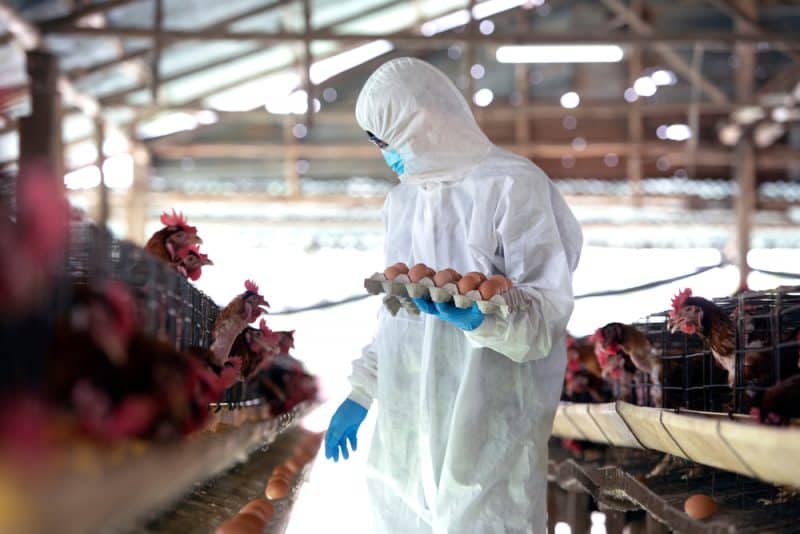
The good news about chicken coop dust is that, for the most part, you’re unlikely to inhale enough of it to cause major respiratory problems. Poultry dust is most problematic for workers in commercial poultry houses and is less likely to cause issues for the owners of backyard flocks.
That said, it can still cause significant health problems such as:
- Coughing
- Shortness of breath
- Phlegm production
- Wheezing
- Chest tightness
- Itchy, watery eyes
- Sore throat
- Runny nose or sneezing
- Flu-like symptoms
- Asthma
There are other factors at play when it comes to your health and the chicken coop, too.
For example, chicken coops also contain ammonia.
You can’t really get around this. However, it’s found in higher concentrations in the winter months, when ventilation is poorer.
An airborne irritant, it can impact your respiratory tract and your eyes.
There are other risks presented by chicken coop dust, too, though these are less common. The dust in your coop can harbor endotoxins or bacteria. These can seriously affect your health, depending on what type of bacteria they are.
Histoplasmosis is another rare disease that can be spread via poultry dust. This is an infectious disease caused by a fungus named Histoplasma capsulatum.
Typically, histoplasmosis affects the lungs. However, it can also affect other parts of the body, like your adrenal glands, skin, liver, eyes, or central nervous system.
It’s more dangerous for those with weakened immune systems. This disease is more common in areas that have moist environments, moderate temperatures, and rich soils.
It is spread through chicken droppings as well as those from other flying animals (including bats, pigeons, and starlings). However, it does not affect birds because of their high body temperatures.
It produces tiny spores that can be inhaled and cause symptoms that are severe and similar in nature to tuberculosis.
How to Limit Chicken Coop Dust
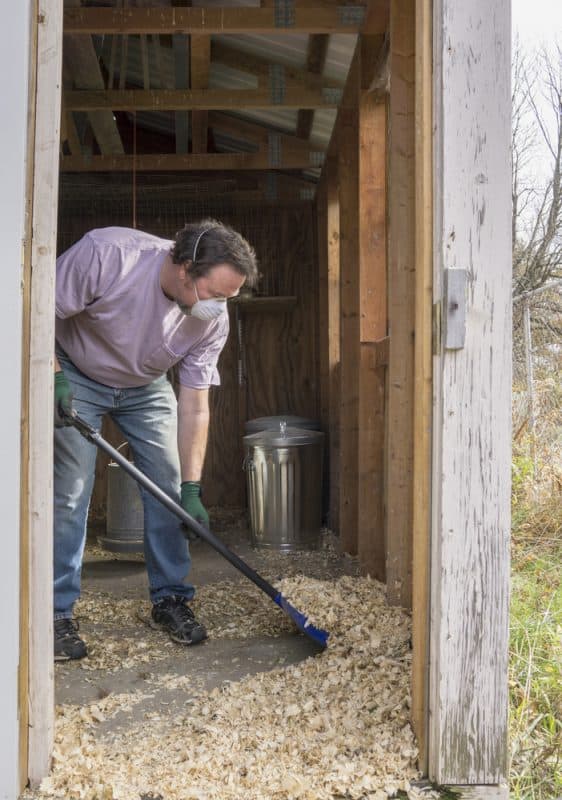
Here are a few tips on how to limit the amount of poultry dust produced inside your chicken coop. This can also help you limit its impact on your overall health and wellbeing.
1. Regular Cleaning
Here’s the deal – chicken coop dust isn’t just harmful to you. It’s also harmful to your chickens. Because of this, regular cleaning is essential to keep everyone healthy. It can help improve the air quality, which is affected by poultry dust and increased ammonia levels.
How often you should clean your coop will depend on several factors. For example, consider the size and style of your coop, how many chickens you have, and how much time they stay in the coop each day.
A weekly clean-out and replacement with fresh bedding is a good idea.
You should also do a thorough deep cleaning a few times per year (even if you are using the deep litter method of bedding). Wear gloves and a mask when you scrape out the bedding and don’t forget the nesting boxes, either.
2. Choose the Right Bedding
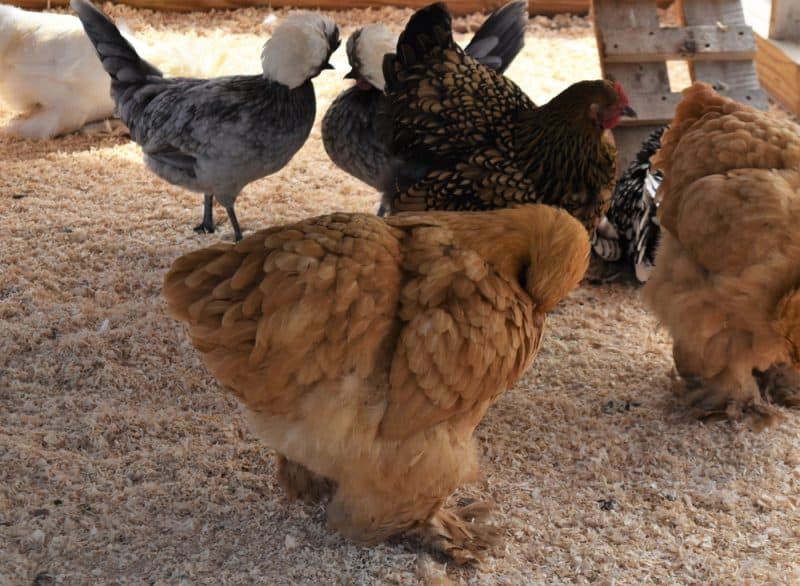
Some types of bedding are superior to others when it comes to the chicken coop and your respiratory health.
Wood dust tends to be the most harmful.
Softwood shavings (such as those from yew, cedar, and pine) and dust have been linked to occupational asthma, rhinitis, and skin problems.
If you use wood shavings, stick to those that are larger or flaked. Pine is a good option but avoid cedar since the scent can be toxic to chickens. Hemp bedding is another unique option that is growing more popular by the day, albeit rather expensive.
3. Improve Ventilation
As you might expect, improving the ventilation in your chicken coop is a good way to reduce the amount of dust floating around.
Ventilation can also improve the incidence of other health problems, including frostbite in the wintertime. Make sure your coop is adequately ventilated with windows that can be opened or even adding barn fans, if necessary.
While you don’t necessarily want your coop to be drafty, good ventilation will help clear out a lot of that dust (and make it far less stinky in there, too!).
4. Keep Appropriate Flock Sizes
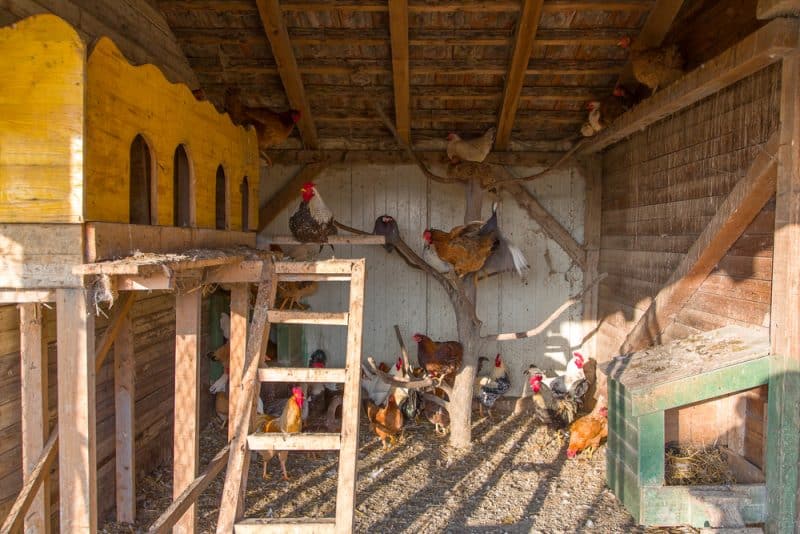
Don’t overcrowd your coop.
Not only is a larger flock population going to produce more dust and more ammonia in a shorter period, but it’s also going to increase the likelihood that your chickens suffer from respiratory problems as a result.
Keep the coop population at a reasonable level, ideally allowing for about 2-3-square-feet per chicken inside the chicken coop (but the more space you allow, the better).
5. Use a Respirator or Mask
Because most negative health effects produced by chicken coop dust will be related to your respiratory tract, you may find some protection in wearing a respirator or mask.
Your lungs can clear out some dust through coughing and sneezing but ultimately, if the chicken coop dust is heavy, they might not be up to the task.
Wearing a mask will prevent some of those dust particles from getting into your lungs and can reduce the likelihood of health effects.
Wearing other kinds of protective clothing and equipment when cleaning your coop or working with your chickens also isn’t a bad idea. Long sleeves and gloves can reduce your risk of coming into contact with any bacteria or fungi in the chicken coop dust, in particular.
6. Try Chicken Tractors or Free Ranging
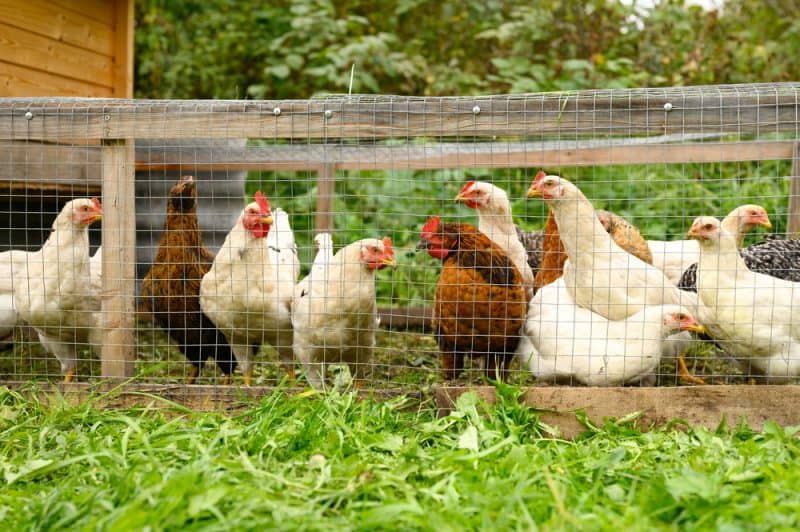
In some cases, ditching the chicken coop entirely might be a smarter alternative.
Rather than keeping your chickens locked inside the coop all day, try free-ranging them so they can stretch their legs. They’ll spend less time in the coop and generate less dust. That means less cleaning for you, even if you need to lock them back in at night.
Another alternative is to try raising your chickens in chicken tractors. These can be moved every single day so the amount of dust that is generated is practically nonexistent. True, these might not be the best option in the wintertime if you have a heavy snow load.
However, chicken tractors work wonders at reducing poultry dust in the summer, fall, and spring months.
Can Your Chicken Coop Make You Sick?
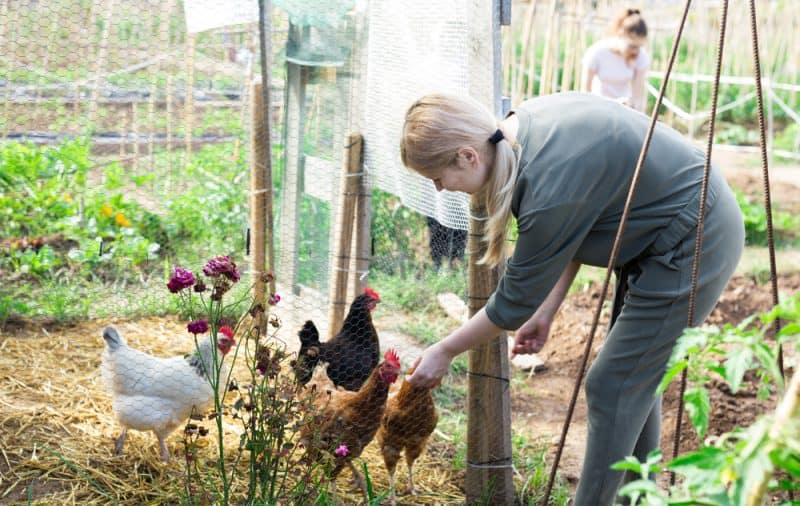
Hopefully, this article hasn’t scared you away from raising chickens!
While you can get sick from chicken coop dust, the likelihood of falling ill when working with just a few backyard chickens is quite low. More often than not, respiratory problems are experienced by workers in commercial chicken houses – not backyard chicken keepers.
That said, you can still get sick from a chicken coop so it’s important to take the steps listed above to make sure that you – and your flock – stay healthy at all times.
